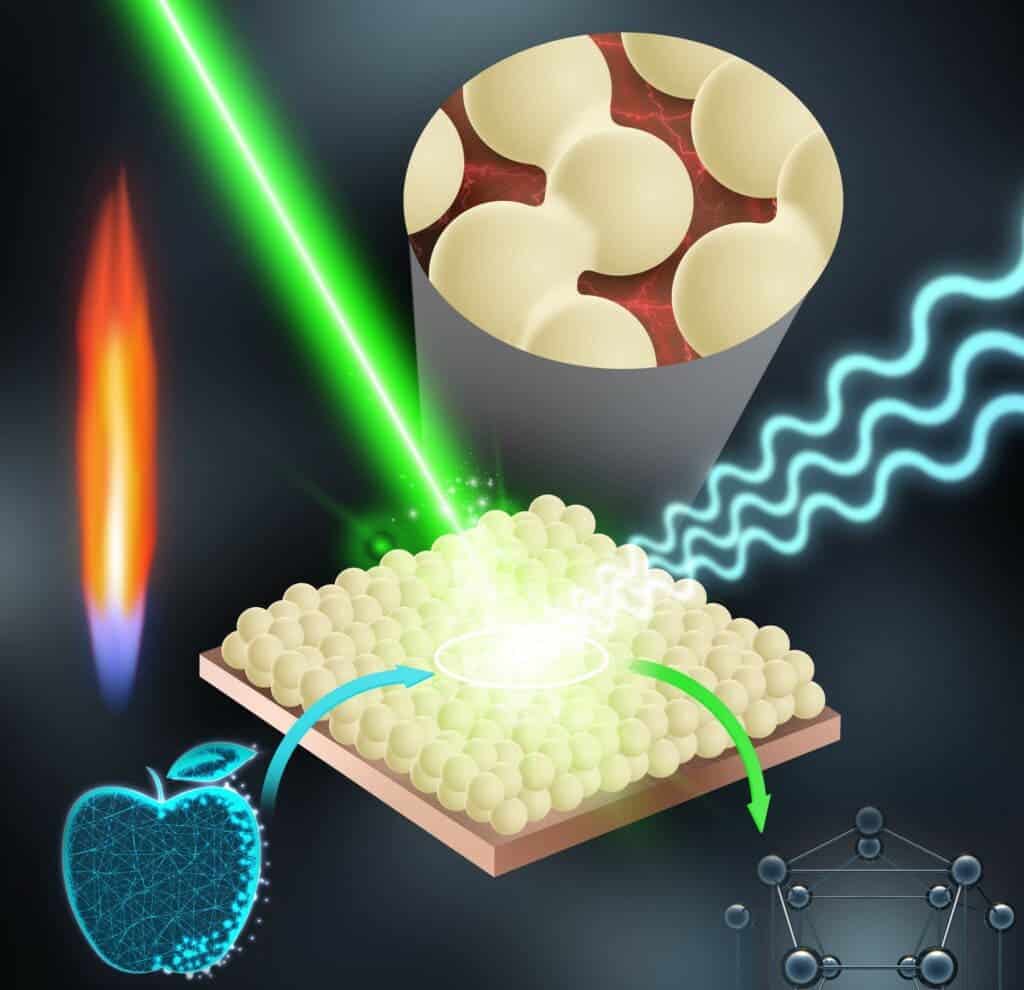Scientists have developed a nanosensor technology capable of detecting pesticides on fruits in less than five minutes. Pesticide contamination is a very common and serious health hazard as every year it affects over 300 million people and leads to 11,000 deaths — this novel sensor could help.

According to an analysis by the Environmental Working Group (EWG), more than 70% of non-organic fruits sold in the US contain harmful pesticides. Per another report from the Pesticide Action Network, between 2011 and 2019, the production of pesticide-infected fruits increased by 53% in Europe. Unfortunately, the methods currently employed for detecting the presence of pesticides in fruits are also less practical because they are costly, require expertise, advanced equipment, and take a lot of time.
However, these challenges associated with pesticide detection in fruits can be overcome using a new nano-sensor-based approach invented by researchers Georgios Sotiriou and Haipeng Li from the Department of Microbiology, Tumor, and Cell Biology at Karolinska Institute. The researchers have developed a nanosensor flame spray based on the 1970s surface-enhanced Raman scattering (SERS) technique.
While explaining the effectiveness of their nanosensors, the first author of the study Haipeng Li told ZME Science:
“Compared to current pesticide detection techniques, our SERS-based approach is easy, simple and safe. It does not need advanced and complex instruments, and only a portable spectrometer is fine. The operator does not need really professional training, and everyone can know how to do the detection after half an hour’s training. The detection of pesticide can be done in a few minutes in the market or in the fruit shop by the customers.”
How does the SERS nanosensor work?
In their study, the researchers claim that SERS is a highly effective technique capable of increasing the possibility of biomolecule detection on a metal surface by over one million times. It is already used in various applications in medical tests and other industries. For instance, diagnosis of biomarkers for diseases like HIV and safe inspection of explosive items by police and customs authorities is also done using SERS. Moreover, the technique is also employed for the detection of antibiotics in milk and human blood. But the new sensor has an important tweak.

Sotiriou and Li developed a SERS nanosensor equipped with a flame spray that can fire silver nanoparticles across even large targeted areas. The researchers suggest that absorption signals from chemicals that are to be identified can be better detected on the surfaces of metals like gold, silver, and copper. Copper, in particular, could be a cost-effective material to be used for this type of sensor.
The researchers first tested the nanosensors to detect a tracer dye twice in a gap of two to five months. During the initial tests, a layer with the same amount of the dye was put on the sensors which were then successfully diagnosed without any discrepancies by the SERS detector.
The researchers then decided to further test the SERS sensors against Folidol (also called parathion-ethyl), a highly toxic organophosphate insecticide that is banned in many countries including the US and UK. They dipped an apple containing parathion residues in a solution. The sensor indicated the presence of the insecticide within five minutes of diagnosing the solution.
“Our sensors can detect pesticide residues on apple surfaces in a short time of five minutes without destroying the fruit, While they need to be validated in larger studies, we offer a proof-of-concept practical application for food safety testing at scale before consumption,” the researcher notes.
Are there any limitations to this quick pesticide detection method?
The combination of multiple pesticides (a cocktail of pesticides) in fruits results in more complex and toxic contamination that are even harder to diagnose. These cocktails of pesticides are causing more concerns for people’s health nowadays. The researchers at Karolinska Institute still have to test the SERS nanosensors against multiple pesticides and to carefully assess what levels of pesticide can be detected with the sensor.
Such tests could further reveal more details about the potential and limitations of their technique. This is why Sotiriou and Li are now planning to continue their scientific work on super sensitive nano-sensor and building up a new approach for detecting cocktails of pesticides. They are also making efforts to turn their nanosensor into another widely used SERS application.
“We will work more on scale-up manufacturing of low-cost and high-performance SERS nano-sensors, which will help to resolve limitations for the actual application of SERS technique,” said Haipeng Li.
The study is published in the journal Advanced Science.


